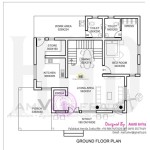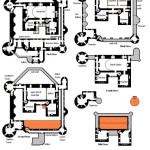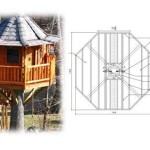Essential Aspects of Layout Of A House Plan Foundation
The layout of your house plan foundation is one of the most important decisions you'll make in the construction process. It will determine the overall shape and size of your home, as well as the flow of traffic and the placement of rooms. There are a number of factors to consider when planning your foundation layout, including:
Lot Size and Shape
The size and shape of your lot will play a big role in determining the layout of your foundation. If you have a small lot, you'll need to design a foundation that is compact and efficient. If you have a large lot, you'll have more freedom to design a foundation that is more spread out and spacious.
Building Codes
Building codes are regulations that govern the construction of homes. These codes will vary from place to place, so it's important to check with your local building department to find out what codes apply to your area. Building codes may dictate the minimum size of your foundation, the spacing of your footings, and the depth of your foundation.
Soil Conditions
The soil conditions on your lot will also affect the layout of your foundation. If you have poor soil conditions, you'll need to design a foundation that is strong enough to support your home. This may require using special footings or piers.
Room Placement
The placement of rooms in your house will determine the flow of traffic and the overall livability of your home. When planning your foundation layout, you'll need to consider the following factors:
- The number of bedrooms and bathrooms you need
- The size and shape of each room
- The location of windows and doors
- The flow of traffic from room to room
Foundation Type
There are a number of different types of foundations that you can choose from, including:
- Slab-on-grade foundations
- Crawl space foundations
- Basement foundations
The type of foundation you choose will depend on the soil conditions on your lot, the size and weight of your home, and your budget.
Cost
The cost of your foundation will vary depending on the size and type of foundation you choose. Slab-on-grade foundations are typically the most affordable option, while basement foundations are the most expensive. Crawl space foundations are a good compromise between cost and functionality.
Once you've considered all of these factors, you can start to develop a layout for your house plan foundation. It's important to work with a qualified architect or engineer to ensure that your foundation is designed and built to meet your specific needs.
Foundation Plan And Layout Details Of Single Story House Dwg File How To Open Plans
Civil Engineering 12 24 11 Architectural House Plans How To Plan Floor Layout
Foundation Plans How To Choose The Right One Houseplans Blog Com
Foundation Plan Of 25x15m Ground Floor Residential Building Is Given In This Autocad Drawing Model Now Cadbull
Foundation Plan Of Residential House Design With Detail Dimension In Autocad Floor Plans How To
House Plan Layout Foundation Electric View Detail Dwg File Cadbull
The Typical Foundation Plan Of 4 And 8 Story Buildings Scientific Diagram
Foundation Plans How To Choose The Right One Houseplans Blog Com
Foundation Plan Of 8x10m House Is Given In This Autocad Drawing Model Now Cadbull
Foundation Plans How To Choose The Right One Houseplans Blog Com








